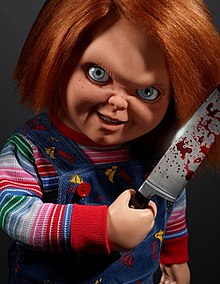
Introduction to Freudian Analysis
Sigmund Freud, the father of psychoanalysis, proposed theories that explore the unconscious mind and the psychological conflicts that influence human behavior. In analyzing the Child’s Play series, particularly the character of Chucky, we can apply Freudian concepts such as the uncanny, the id, ego, and superego, and repression to gain a deeper understanding of the film’s psychological impact.
The Uncanny
Freud’s concept of the uncanny (das Unheimliche) describes something familiar yet foreign that evokes fear and discomfort. Chucky, a seemingly innocent child’s toy, becomes terrifying when possessed by the spirit of a serial killer, Charles Lee Ray. This transformation exemplifies the uncanny, as the familiar (a doll) turns into something horrifying and threatening. The film plays on this unsettling duality, creating a deep sense of unease in the audience.
The Id, Ego, and Superego
Freud’s structural model of the psyche consists of the id, ego, and superego:
- Id: The primitive and instinctual part of the mind that contains sexual and aggressive drives and hidden memories.
- Ego: The realistic part that mediates between the desires of the id and the morals of the superego.
- Superego: The moral conscience that incorporates the values and norms of society.
Chucky embodies the id’s aggressive and destructive impulses. As a killer doll, he acts on primal urges without any moral constraints, reflecting the raw, unfiltered desires of the id. The contrast between Chucky’s actions and the moral values of the human characters in the film highlights the struggle between the id and the superego.
Repression and the Return of the Repressed
Repression is a defense mechanism where undesirable thoughts and desires are pushed into the unconscious mind. In Child’s Play, Chucky represents the return of repressed violence and aggression. Charles Lee Ray’s spirit, which cannot be contained by death, returns through the doll, manifesting as a physical embodiment of repressed murderous impulses. The repressed content erupts into the conscious world, causing chaos and fear.
Childhood Innocence and Corruption
Freud often explored the themes of childhood and the loss of innocence. Chucky’s presence in a child’s toy distorts the symbol of innocence, transforming it into an object of terror. This corruption of childhood purity by malevolent forces underscores the fragility of innocence and the ever-present potential for its destruction.
Symbolism of the Doll
Dolls are traditionally symbols of childhood and safety, but Chucky’s transformation subverts this symbolism. The doll becomes a vessel for evil, challenging the audience’s perceptions of safety and familiarity. This subversion can be linked to Freud’s theory of the uncanny, as it blurs the line between animate and inanimate, safe and dangerous.
Freudian analysis of Chucky in the Child’s Play series reveals deep psychological themes that contribute to the film’s horror. The interplay of the uncanny, the id’s unchecked aggression, the return of repressed impulses, and the corruption of childhood innocence all serve to create a narrative that resonates with our deepest fears. Chucky’s character is a powerful representation of the dark aspects of the human psyche, making Child’s Play a compelling subject for psychoanalytic exploration.
References
- Freud, S. (1919). The Uncanny. Retrieved from [Link to source if available].
- Freud, S. (1923). The Ego and the Id. Standard Edition of the Complete Psychological Works of Sigmund Freud.
- Jung, C. G. (1964). Man and His Symbols. Garden City, NY: Doubleday.
No responses yet